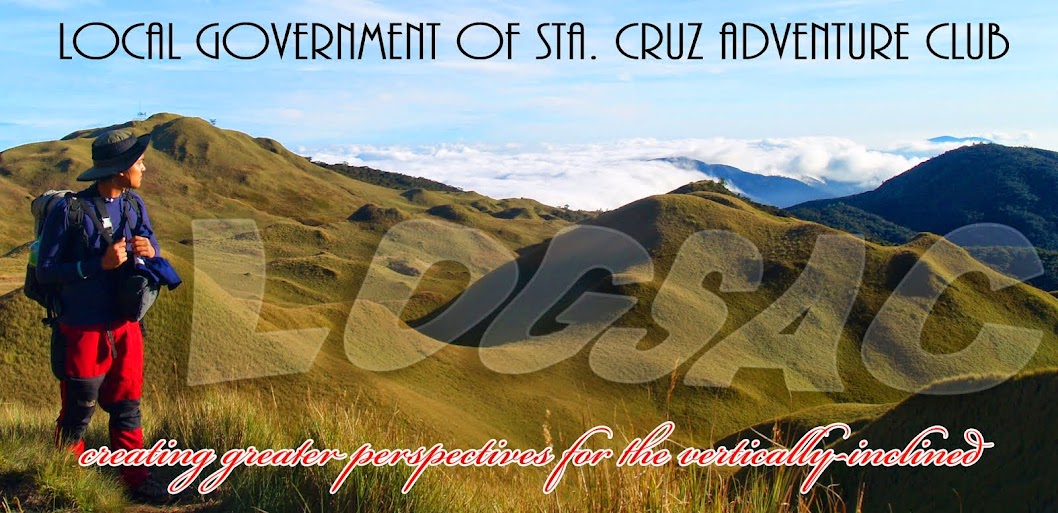In
time for the 7th founding anniversary of the Local Government of
Sta. Cruz Adventure Club, the group invaded the orient seas of Dahican, Mati
City, Davao Oriental on February 21-22, 2014. This is the first time that LOGSAC
had altogether travelled somewhere east, and it was another experience
worth-remembering.
“We
tried to cook something different for the group, this time we made sure to play
with the huge waves of Dahican,” said club Vice President Jonas Florencondia.
Indeed, this place deserves to be on top of the list for a must-see beach
destination in the entire country. With a long coast line of approximately 7
kilometers, a diverse experience awaits everyone.
Dahican
is also known to be Mati City’s prime tourism destination showcasing the world’s
famous ocean boarding adventure activities like surfing and skim boarding. With
its big waves, it has already produced an international winner named Bayogyog who
conquered an event held in Malaysia a couple of years ago.
“It
was fitting to have our 7th anniversary being held in one of
Mindanao’s popular places,” said club member Danrev Broñola. “As we grow older,
I hope we will be able to continue what we have started when we were just a
neophyte adventure club”.
The
group stayed overnight at Kubo sa Dahican, an isolated resort located at the
tip of Barangay Dahican. It is a cheap resort ideal for backpackers and group
tours, with accommodation facilities and swimming pool ideal for team-building
activities. They also have small close cottages for small group. It is only
15-minute van ride from Mati City center to Kubo sa Dahican and it can also be
accessed through a motorcycle ride from downtown.
We
tried to maximize all things around the resort to really enjoy the day like
swimming, skim boarding, beach frolicking, shooting, shoting (hehe), eating and
even inter-group gambling. We also continued the volleyball madness we started
a year ago at Gumasa and as usual, it filled us with so much fun and
excitement. And up to this writing, though, I still don’t know who was the
winner of that match. It must be concluded with a do or die game next year, venue
has to be announced later.
The
one thing I also personally love about Mati, or Davao Oriental in general, is
the variety of sea foods in the area that are not as expensive as in other
places we already visited. Our adopted LOGSAC son Jeff Marvy Dean, who was with
the trip, was enticed to buy that lobster in the market worth 80 pesos only. “Lobsters
are very expensive that’s why I bought this without second thought. When I get
to Boracay last year, this same kind costs 800 pesos.” Our dinner and breakfast
were then a seafood affair, after all.
With
the very nice experience in Dahican, one of our club members Darwin “Eboy”
Juntilla even decided not to go home yet the next day. He wanted to stay for
another night and continue the bonding, which was however refused by majority of
the group due to varying reasons.
This
group only gathers once every year and that’s during our anniversary, but when
we do, we always make sure that it will leave an indelible mark in our
respective memories. Unlike before when we always have instant gatherings
almost every week, it is very difficult now to be always in the company of
LOGSAC due to varied commitments of each member.
The
Mati experience will surely be one of the many experiences that will be missed.
Thank you so much to all those who joined the trip. And for those who didn’t make
it, there is always next time for us and that next time will surely be a thing
in the future.


















